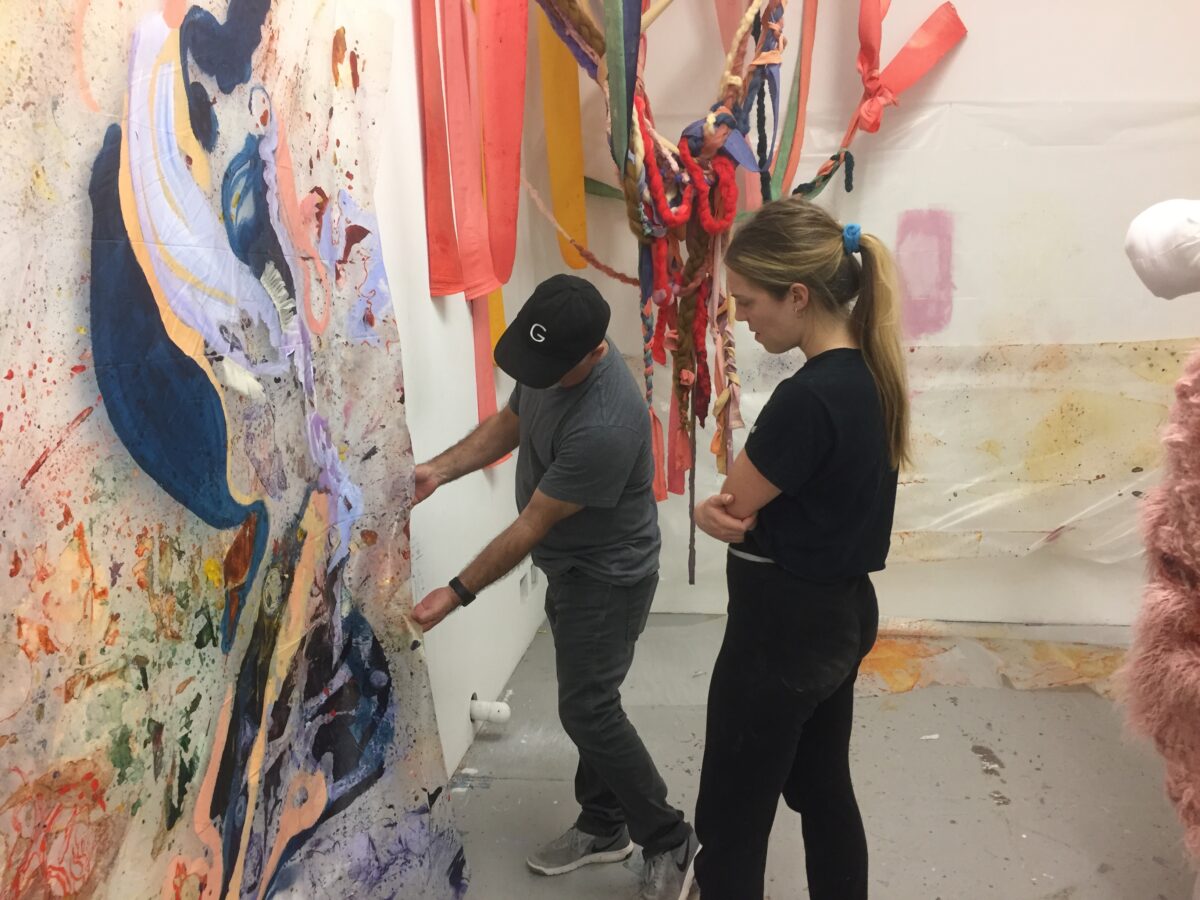A couple mornings after, Open Studios is remembered images and conversations.
- Paintings that play phenomenological tricks: radiant yellows, blues that lighten and darken like an exploration of aquatic depths; these are like windows, like blinds over windows, and with a turn of the eye and mind become pure abstraction, lines and color.
- The life-span of the making of a painting is described in terms of raising children, from the malleable and receptive baby, toddler, and try-anything child to the unruly adolescent that rebels against everything, to the mature adult with whom the painter can achieve a dialogue.
- Long strips of montage that look like film on the wall but are in fact cut-out images on clear tape.
- Paintings of indistinct structures centered in brooding gray skies and ground, ominous and crushingly lonely.
- The never-ending dilemma for artists: what is the value of working in the studio and making marks, creating forms, layering string, constructing and stacking and hingeing objects together, when outside the world is dire. How might art change the world? Is it possible? Thoughts Vermeer may have had as the world pressed in on his northern lit rooms.
- Art lives upon discussion, and discussions carry beyond the rooms: Who are our influences? Philip Guston. Agnes Martin. The Wizard of Oz. Might these depictions of architecture become real architecture. Might this image appear on fog. Might you add a performative aspect. What is the power of the American flag? The Statue of Liberty’s feet are shackled. “Brutalities in history are closer than they appear.”
- 130 artists. 2 days. Artist spaces all over the city and county. Labyrinthine buildings and tidied rooms. Downpours of rain. Sun with rain. “Thank you for coming.” An older couple who’ve made a day of it: “Thank you for doing this. It was wonderful.”
